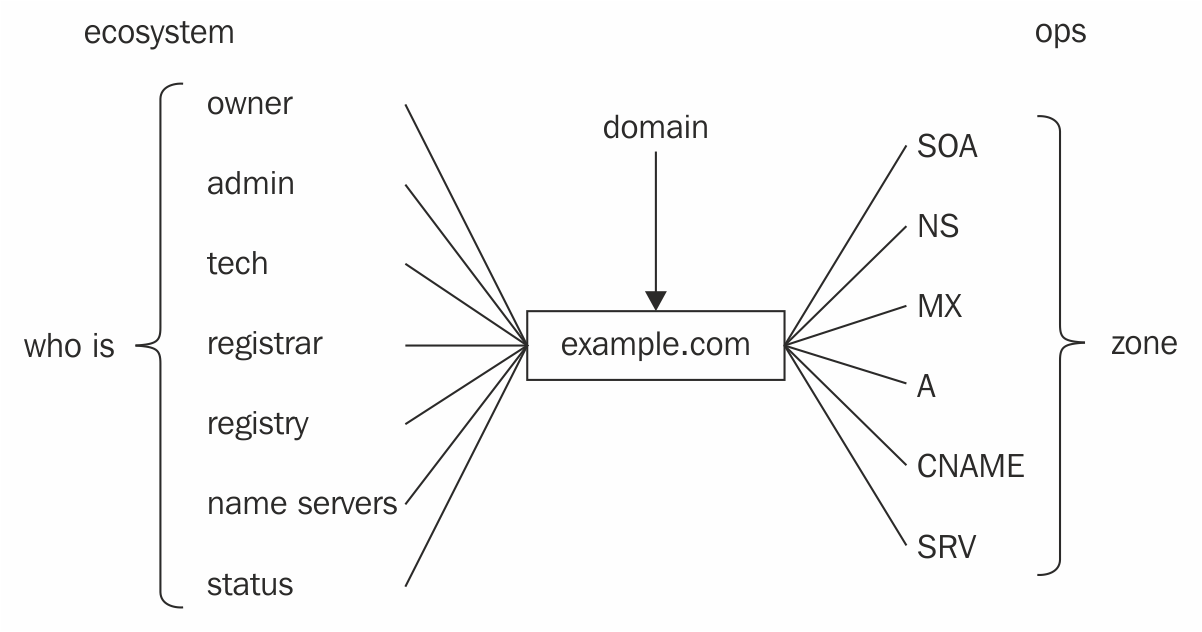You probably already know that a domain name is simply an alphanumeric string that is mapped—via the Domain Name System (DNS) to other data—like an Internet Protocol (IP) address.
So, asking, What is a domain? may seem self-explanatory. example.com is a domain.
However, when you get into the specifics of the DNS protocol and the documents that describe it, we start to run into some odd nuances in terms of what the formal specification of a domain is, versus what you can actually register online at some domain registrar as "your domain name."
For example, underscores are permitted in domain names. This is why certain types of records and practices use them. Later in this book, when we're examining SRV records, we'll see underscores. Take a look at this:
_xmpp-client._tcp.example.com.
However, you cannot go to a registrar website and successfully register something like example_domain.com. The underscore would not be allowed. A hyphen would be permitted, as long as the domain does not begin or end with one.
Now, how about a "hostname"? Those are easy too, right? www.example.com is a hostname. But, now, you can't use an underscore in your hostname, ever. But you can still use hyphens, just as long as they're not at the beginning or the end of a label.
(The labels are the alphanumeric strings between each dot. www, example, and com are the labels that comprise the hostname www.example.com.)
What we are seeing here is an example of the difference between what I call "the domain name ecosystem," which entails the world of registrars, registries, and oversight bodies, and "the DNS," which is what happens on your domains' nameservers or on the operations side of your organization. Take a look at this diagram:

As another example, we will very shortly look at the Anatomy of a domain name, where we will look at the various data components that go into a domain name registration. One of those components is called "the registrant," which is effectively the domain owner. It is the entity that owns the domain name. This is pretty straightforward, but it is not to be confused with the owner name as part of a DNS resource record (RR), which is all the individual records that your nameservers hold and serve up to make your domain—or, more specifically, your zone—visible across the internet.
In Figure 1, those myriad resource records are on the right side of our diagram, under the ops realm, collectively forming a zone, and each record in there will have an owner name, which carries a completely different meaning than the owner of the domain name, shown on the left side, under the domain ecosystem realm
The various components of "the ecosystem realm" are best depicted by the registration details that must be provided at the time a domain is registered, which are held in a database called "WHOIS."
The reason we've gone to such lengths to define these two, seemingly disparate, realms of factors that go into a domain name is this: In my 20+ years of experience in this field, as a sysop, as a CTO, and then CEO of a managed DNS provider, and as a former director for a registry operator, I have observed that a significant portion of domain-related outages occur because of a disconnect between these two realms. Organizations operate with an artificial divide between the overall domain name ecosystem and the nuts-and-bolts operations of their domains, and that can cause problems.



